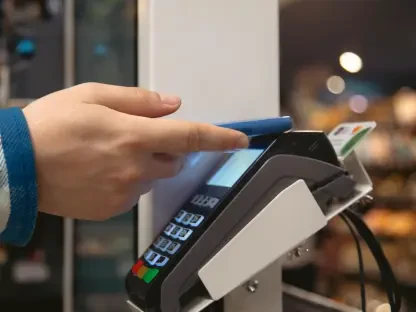Welcome to an exciting conversation about the future of digital commerce and social shopping! Today, we’re thrilled to chat with Zainab Hussain, our esteemed retail expert and e-commerce strategist. With a robust background in customer engagement and operations management, Zainab brings a wealth of insight into how platforms like TikTok Shop and Amazon Live are transforming the way brands connect with consumers. In this interview, we’ll dive into the evolving landscape of social commerce, the power of creator economies, and the innovative strategies shaping online shopping experiences. Let’s explore how trusted voices and dynamic content are redefining retail as we know it.
Can you share a bit about your journey in e-commerce and what sparked your passion for social commerce?
Absolutely, I’ve been in the e-commerce space for over a decade, starting with traditional online retail and gradually moving into more interactive, community-driven platforms. My passion for social commerce ignited when I saw how platforms like TikTok and Amazon Live could blend entertainment with shopping. It’s not just about selling a product anymore; it’s about creating a story and a connection. Working on projects that leveraged influencer content and livestreams showed me the incredible potential to engage customers in real-time, and I’ve been hooked on exploring that intersection ever since.
How do you see the role of trusted voices shaping the future of online shopping experiences?
Trusted voices are everything in today’s digital marketplace. Consumers are bombarded with ads, so they’re turning to creators and influencers they relate to for recommendations. These voices add a layer of authenticity that static product pages can’t match. When someone you follow shows a product in action, whether it’s through a funny TikTok or a detailed livestream, it feels personal. That credibility turns shopping into a social experience, making it more engaging and, honestly, a lot more fun. I believe this shift is here to stay as brands learn to partner with creators who truly resonate with their audience.
What excites you most about the potential of platforms like TikTok Shop for brands looking to grow?
TikTok Shop is a game-changer because it’s not just a social media app—it’s a full-on shopping ecosystem. What excites me is how it seamlessly integrates discovery, entertainment, and purchase into one platform. Brands can reach massive audiences through viral content and then convert that interest into sales without the user ever leaving the app. The creator economy on TikTok also offers endless opportunities for authentic storytelling. For brands, it’s a chance to tap into communities that are already passionate and engaged, which is incredibly powerful for driving growth.
How can brands create meaningful and fun shopping experiences that stand out in the crowded digital space?
It starts with understanding that shopping isn’t just transactional anymore; it’s experiential. Brands need to focus on crafting content that feels genuine and entertaining. Think short-form videos that show a product’s value in a relatable way or livestreams where creators interact directly with viewers, answering questions on the spot. Partnering with influencers who align with the brand’s values helps build trust. It’s also about fostering a sense of community—encouraging user-generated content or hosting interactive challenges can make customers feel like they’re part of something bigger. The goal is to make shopping feel like a conversation, not a pitch.
What strategies do you think are most effective for integrating short-form video and live commerce into a brand’s digital approach?
Short-form video is all about capturing attention fast, so brands should prioritize punchy, creative content that highlights a product’s unique selling points. Think tutorials, behind-the-scenes looks, or quick transformations—anything that feels native to platforms like TikTok. Live commerce, on the other hand, thrives on real-time engagement. Hosting livestreams during product launches or sales events, where viewers can ask questions and get instant responses, builds excitement and urgency. The key is to integrate both into a cohesive strategy—use short videos to build hype and drive traffic to live events where you can close the sale. Consistency and authenticity in messaging across both formats are crucial.
Why should brands prioritize building relationships within influencer ecosystems as part of their social commerce efforts?
Influencer ecosystems are vital because they’re essentially networks of trust. When brands collaborate with influencers, they’re not just buying ad space; they’re tapping into a loyal audience that values that creator’s opinion. These relationships allow brands to reach niche communities with tailored messaging, which is far more effective than broad, generic campaigns. Plus, influencers often know their audience best—they can provide insights on what resonates, helping brands refine their approach. Long-term partnerships, rather than one-off posts, also build credibility over time, turning influencers into genuine advocates for the brand.
What are some common pitfalls brands encounter when launching on platforms like TikTok Shop, and how can they avoid them?
One big pitfall is treating TikTok Shop like a traditional e-commerce platform. Brands sometimes post overly polished or salesy content that feels out of place on a platform driven by creativity and authenticity. To avoid this, they should embrace the app’s playful, trend-driven nature and create content that fits in. Another mistake is neglecting community engagement—ignoring comments or failing to interact with users can make a brand seem distant. The fix is simple: be active, respond to feedback, and join in on trending challenges. Lastly, not investing in the right creators can hurt. Brands should focus on finding influencers whose followers match their target demographic, even if it means working with micro-influencers over big names.
What is your forecast for the evolution of social commerce in the next few years?
I think social commerce is only going to grow as platforms continue to blur the lines between entertainment and shopping. We’ll see even more integration of AI tools to personalize content and streamline the buying process—think algorithms predicting what you’ll love before you even search for it. Live commerce will likely become a staple, with more brands hosting regular events to build loyalty. I also expect augmented reality to play a bigger role, letting users “try on” products virtually during livestreams or through short videos. Ultimately, the focus will shift even more toward community and interactivity, with brands acting less like sellers and more like curators of experiences. It’s an exciting time to be in this space!









